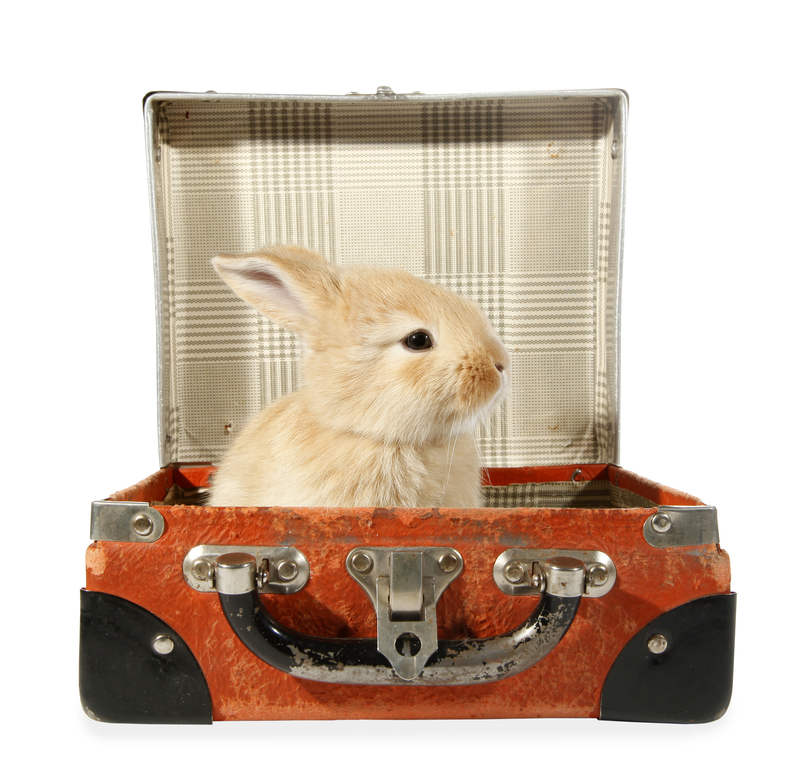Mastering the Move: Why Piano Relocation Isn't a DIY Task
Posted on 28/05/2025
Mastering the Move: Why Piano Relocation Isn't a DIY Task
Introduction: The Allure and Challenge of Moving a Piano
Few household items evoke as much emotional and monetary investment as a piano. From grand concert pieces to upright family heirlooms, these intricate instruments combine artistic craftsmanship with remarkable musical potential. For those on the move, however, piano relocation presents a unique challenge. At first glance, you might think, "Why not handle it myself?" But mastering the move of a piano is far more complex, risky, and consequential than most realize.

The Complexity of Piano Relocation
Internal Mechanics and Delicate Craftsmanship
Every piano, whether a grand or an upright, is a marvel of engineering. With more than 10,000 moving parts inside a typical piano, precise calibration is crucial. A minor jolt or an improper tilt during transport can disrupt this delicate balance, resulting in costly repairs or irreparable harm. Unlike furniture or smaller instruments, a piano's mechanics--strings, hammers, keyboard action--require gentle handling and specialized knowledge to safeguard.
Weight and Dimensions that Demand Expertise
- Grand pianos can weigh between 500 and 1,200 pounds, while
- Upright pianos often fall within the 300 to 800-pound range.
Their substantial mass, along with awkward shapes and delicate legs or pedals, make them especially hazardous to move without professional tools and precautions. Standard dollies, straps, or cardboard can't keep these massive instruments safe during transit up stairs, through tight doorways, or across uneven floors.
Why DIY Piano Moves Often Go Wrong
Underestimating the Physical Risk
The average homeowner is ill-equipped to coordinate a safe piano move. Attempting to relocate a piano yourself may lead to:
- Back injuries
- Broken fingers or toes
- Dropped instruments
- Property damage, such as smashed floors or doorways
Lack of Proper Equipment
Unlike standard household moves, successful piano relocation relies on:
- Padded covers and moving blankets specific to pianos
- Custom dollies and skids
- Skilled manpower trained to synchronize lifting and maneuvering
- Specialized braces and straps for safe transport
Transportation and Environmental Factors
Pianos are not just heavy--they're sensitive to temperature fluctuations, humidity, and vibration. Professionals use climate-controlled trucks and secure mounting systems that ordinary rental vans don't offer. What's more, proper insurance coverage and damage liability further protect your investment throughout the process.
The True Cost of a DIY Piano Move
Potential Damage and Repair Expenses
A seemingly minor bump during a move can result in:
- Damaged strings or soundboard
- Misaligned action or keys
- Cracked casing or broken legs
- Loss of tone and playability
Time and Stress
Even with several helpers, the average homeowner can spend hours navigating stairs, maneuvering tight hallways, and loading a piano safely. The stress and frustration involved--plus the risk to your property and personal well-being--can turn a move into a regrettable ordeal.
Liability Concerns
If a friend or family member is injured during a DIY move, you may also be responsible for medical expenses or legal claims. Professional piano movers, on the other hand, carry robust insurance to handle these eventualities.
Benefits of Professional Piano Moving Services
Experience and Expertise
Professional piano movers possess years of hands-on experience moving every type of piano--spinets, uprights, baby grands, and concert grands. This expertise allows them to:
- Develop a customized moving plan
- Evaluate potential hazards in the move route
- Handle tricky angles, stairs, or narrow doorways
- Secure the piano for both short and long-distance moves
Advanced Equipment and Techniques
Companies specializing in piano moves invest in:
- Piano boards (or "shoe" for grand pianos)
- Hydraulic lift-gates
- Multi-person moving teams
- State-of-the-art securing and padding methods
Insurance and Peace of Mind
A reputable piano moving company will insure your instrument against damage or loss. You can trust trained professionals to handle unexpected challenges swiftly, with a focus on customer service and satisfaction.
Addressing Common Myths About Piano Moving
"Pianos Have Wheels, So They're Easy to Move"
Many pianos feature small casters, but these are not intended for more than slight, gentle repositioning within a room. Moving a piano across thresholds, up ramps, or down stairs on its casters can cause severe structural damage.
"Four Strong Friends Can Handle It"
While strength helps, experience and coordination are far more important. One false move or slip can ruin a valuable instrument--and risk serious injury.
"DIY Saves Money"
Many believe a do-it-yourself approach is more economical. However, after factoring in the cost of renting equipment, buying padding, renting a truck, and the potential risks and repair bills, hiring professionals is often the far more cost-effective and stress-free option.
Types of Pianos and Their Unique Moving Challenges
Upright Pianos
Compact but heavy, upright pianos present unique relocation barriers due to their bulk and weight distribution. Experts understand how to safely tilt and guide these instruments without damaging the housing or the internal action.
Grand and Baby Grand Pianos
- Require partial disassembly (such as removing lid, legs, and pedal lyre)
- Delicate balance while laying the piano onto a special skid board
- Precision in reassembling post-move
Professional piano relocation teams come equipped with the skills and specialized equipment to manage these steps with minimal risk.
Piano Moving and the Value of Preservation
Beyond the financial investment, many pianos hold sentimental value. Whether an heirloom or a beloved instrument you've spent years with, trusting it to professionals guarantees its preservation as a part of your family's musical legacy.
How Professional Piano Movers Approach the Relocation Process
- Assessment: Evaluation of piano size, structure, and the unique logistics of your space
- Route Planning: Measurement of doorways, stairs, and potential obstacles
- Preparation: Securing all parts, wrapping with protective blankets, and employing purpose-built skids
- Execution: Careful movement using professional protocols and harmonized teamwork
- Delivery and Setup: Positioning and assembly at the new location, with optional post-move tuning
The Importance of Post-Move Piano Tuning and Care
No matter how carefully a piano is moved, changes in position and climate will affect its tuning. Professional movers often coordinate post-move tuning services to restore the instrument's optimal sound and playability, ensuring your piano continues to bring joy immediately after the move.

Frequently Asked Questions About Piano Relocation
Can a general moving company move my piano?
While some moving companies claim to handle pianos, unless they have dedicated piano-moving specialists and the proper equipment, you risk damaging your instrument. Always choose a mover with verified experience in piano relocation.
How far in advance should I book a piano mover?
The best piano movers are often booked weeks in advance, especially during peak moving seasons. Plan at least a month ahead to ensure availability and adequate time for route assessments.
Is insurance necessary for piano moves?
Absolutely. Comprehensive insurance protects your investment from every possible mishap. Don't hesitate to request documentation from your chosen piano moving company.
What about moving pianolas, organs, or harpsichords?
All these large, fragile instruments require similar expertise and tools for safe relocation. Seek specialists who regularly handle complex instrument moves.
Conclusion: Mastering Your Piano Move--Leave It to the Experts
Piano relocation is a precise, technical, and demanding task that goes well beyond general muscle and basic moving knowledge. Choosing to move a piano yourself risks not just the high value of your instrument, but also your safety, time, and peace of mind. By relying on qualified professional piano movers, you ensure your instrument receives the specialized care it deserves--preserving its artistry and utility for years to come.
Whether you're moving across town or across the country, mastering the move means recognizing the value of expertise. Don't let a piano move become a costly mistake--invest in skilled professionals and enjoy the assurance that your precious instrument will continue to play beautifully in its new home.



